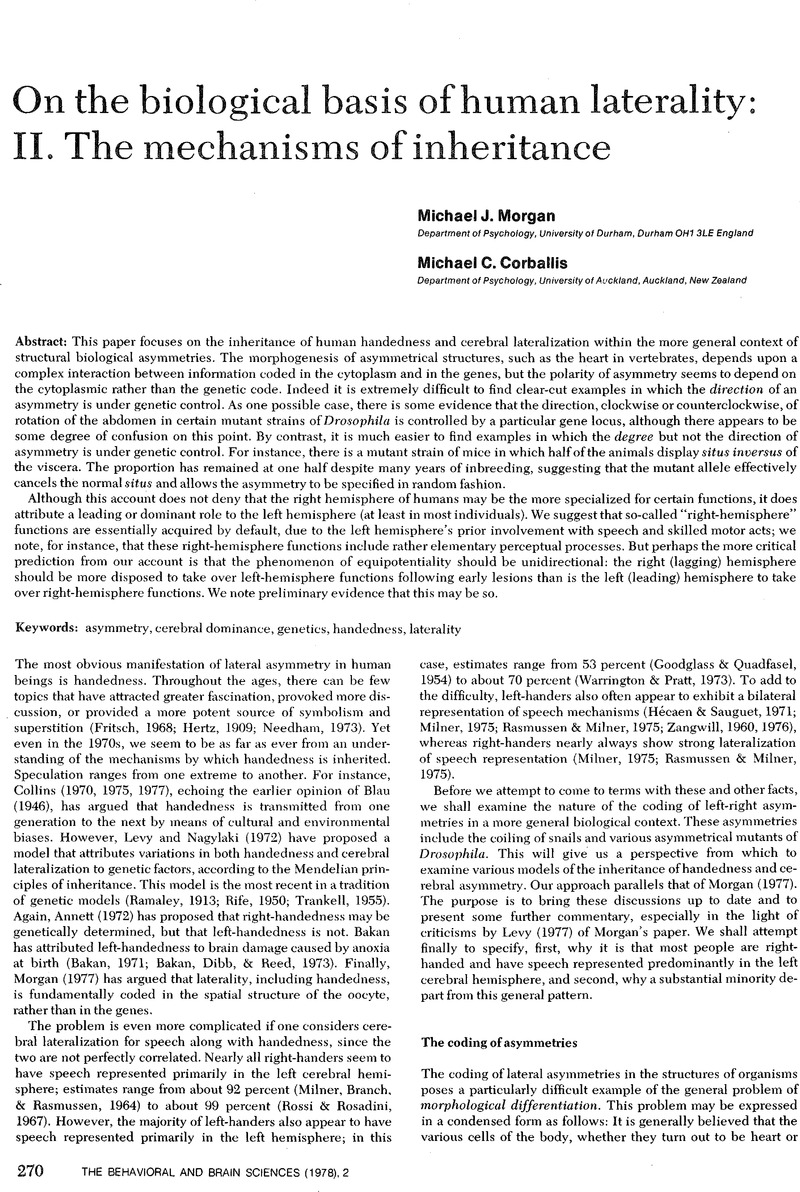Crossref Citations
This article has been cited by the following publications. This list is generated based on data provided by Crossref.
1983.
Human Laterality.
p.
203.
Boklage, Charles E.
1984.
On the inheritance of directional asymmetry (sidedness) in the starry flounder, Platichthys stellatus: Additional analyses of Policansky's data.
Behavioral and Brain Sciences,
Vol. 7,
Issue. 4,
p.
725.
Harris, Lauren Julius
1984.
Louis Pierre Gratiolet, Paul Broca, et al. on the question of a maturational left–right gradient: Some forerunners of current-day models.
Behavioral and Brain Sciences,
Vol. 7,
Issue. 4,
p.
730.
McManus, I. C.
1984.
The inheritance of asymmetries in man and flatfish.
Behavioral and Brain Sciences,
Vol. 7,
Issue. 4,
p.
731.
Policansky, David
1984.
Do genes know left from right?.
Behavioral and Brain Sciences,
Vol. 7,
Issue. 4,
p.
733.
Corballis, Michael C.
1984.
Human laterality: Matters of pedigree.
Behavioral and Brain Sciences,
Vol. 7,
Issue. 4,
p.
734.
Palmer, A. Richard
1996.
From symmetry to asymmetry: Phylogenetic patterns of asymmetry variation in animals and their evolutionary significance.
Proceedings of the National Academy of Sciences,
Vol. 93,
Issue. 25,
p.
14279.



